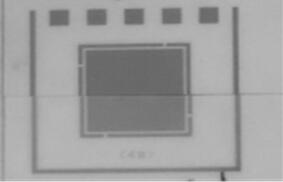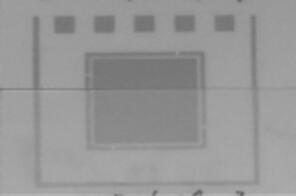High-acid-resistance dielectric paste
A technology of medium slurry and acidic medium, applied in the direction of cellulose material, quartz/glass/glass enamel, organic insulator, etc., to achieve the effect of improving structure, enhancing compactness, and reducing use limitations
- Summary
- Abstract
- Description
- Claims
- Application Information
AI Technical Summary
Problems solved by technology
Method used
Image
Examples
Embodiment 1
[0021] Preparation of glass powder: Precisely mix 1 kg of bismuth oxide 60%, silicon oxide 25%, aluminum oxide 5%, boron dry 6%, and zinc oxide 4% in a polytetrafluoroethylene tank according to the mass percentage, and then seal the polytetrafluoroethylene tank. Vinyl fluoride tank, placed on an eight-roller ball mill for mixing for 1.5 hours; after the mixing is completed, the mixture obtained is put into a 2L quartz crucible, placed in a resistance furnace at 1200°C for 1.5 hours of heat preservation and melting, and the obtained glass solution is water-quenched to obtain glass slag , put the glass slag into a 3L zirconia ball mill jar, add pure water according to the mass ratio of material and water of 1:1, put it on an eight-roller ball mill and grind it until the particle size D50≤1.5μm, then pour it out, and use a 600-mesh screen After sieving, put the sifted liquid into an oven and dry at 120°C for 24 hours to obtain Bi-Si-B glass powder; refill the Bi-Si-B glass powder ...
Embodiment 2
[0025] Preparation of glass powder: Precisely mix 1 kg of bismuth oxide 55%, silicon oxide 30%, aluminum oxide 4%, boron dry 9%, and zinc oxide 2% in a polytetrafluoroethylene tank according to the mass percentage, and then seal the polytetrafluoroethylene tank. The vinyl fluoride tank was placed on an eight-roller ball mill for 1.5 hours of mixing; after the mixing was completed, the resulting mixture was put into a 2L quartz crucible, and placed in a 1100°C resistance furnace for heat preservation and melting for 1 hour, and the obtained glass solution was water-quenched to obtain a glass body. Crush the glass body into glass slag, put the glass slag into a 3L zirconia ball mill jar, add pure water according to the mass ratio of material to water at 1:1, put it on an eight-roller ball mill and grind it until the particle size D50≤1.5μm, pour it out, and Use a 600-mesh sieve to sieve, put the sieved liquid in an oven and dry at 120°C for 24 hours to obtain Bi-Si-B glass powder...
Embodiment 3
[0029] Preparation of glass powder: Precisely mix 1 kg of bismuth oxide 75%, silicon oxide 20%, aluminum oxide 2%, boron dry 2%, and zinc oxide 1% in a polytetrafluoroethylene tank according to the mass percentage, and then seal the polytetrafluoroethylene tank. The vinyl fluoride tank was placed on an eight-roller ball mill for mixing for 2 hours; after the mixing was completed, the resulting mixture was put into a 2L quartz crucible, and placed in a resistance furnace at 1300°C for 1 hour of heat preservation and melting. The obtained glass solution was water-quenched to obtain a glass body. Crush the glass body into glass slag, put the glass slag into a 3L zirconia ball mill jar, add pure water according to the mass ratio of material to water at 1:1, put it on an eight-roller ball mill and grind it until the particle size D50≤1.5μm, pour it out, and Use a 600-mesh sieve to sieve, put the sieved liquid in an oven and dry at 120°C for 24 hours to obtain Bi-Si-B glass powder; r...
PUM
| Property | Measurement | Unit |
|---|---|---|
| particle size | aaaaa | aaaaa |
Abstract
Description
Claims
Application Information
 Login to View More
Login to View More - R&D
- Intellectual Property
- Life Sciences
- Materials
- Tech Scout
- Unparalleled Data Quality
- Higher Quality Content
- 60% Fewer Hallucinations
Browse by: Latest US Patents, China's latest patents, Technical Efficacy Thesaurus, Application Domain, Technology Topic, Popular Technical Reports.
© 2025 PatSnap. All rights reserved.Legal|Privacy policy|Modern Slavery Act Transparency Statement|Sitemap|About US| Contact US: help@patsnap.com



